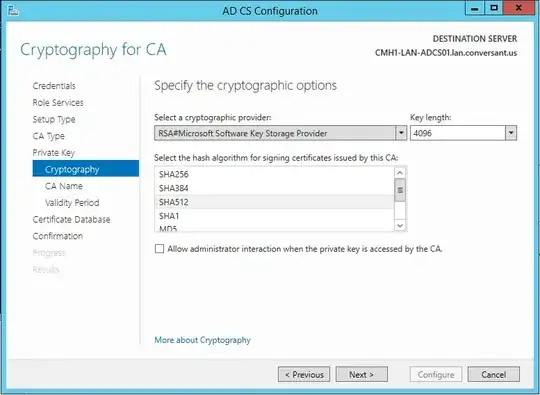A simplified flowchart for processing NGINX configurations when listening on ports only:

This could easily be generalized for listen <IP_ADDRESS>:<PORT> declarations though; see quote from the NGINX docs at the bottom of this answer.
Examples
1. NGINX config generated by the Mozilla SSL Configuration Generator
The gist of the config cited in the question:
server {
listen 80 default_server;
listen [::]:80 default_server;
# ... instructions ...
}
server {
listen 443 ssl http2;
listen [::]:443 ssl http2;
# ... instructions ...
}
As Richard Smith says in his comment, both server blocks are the default ones for requests coming in ports 80 and 443, respectively, accepting any domain; if there were server_name declarations in the blocks, they wouldn't matter.
For example, an HTTPS request on port 443 will skip the first block entirely as the default_server declaration only applies for requests coming on port 80.
2. Redirect all HTTP requests for a domain to HTTPS
From this Server Fault thread:
#############
# CATCH-ALL #
#############
server {
listen 80 default_server;
server_name _;
return 404;
}
##########################
# HTTP-to-HTTPS redirect #
##########################
server {
listen 80;
server_name ourdomain.com;
return 301 https://ourdomain.com$request_uri;
}
#########
# HTTPS #
#########
server {
listen 443 default_server ssl http2;
# ... instructions ...
}
Example requests:
http://ourdomain.com/about
NGINX will look at the server_name directive after seeing that there are two blocks for handling port 80, and will match the second one.
http://random-domain.org/ where, for some reason, the domain name still resolves to the IP address where NGINX server with the above config is running
None of the server blocks listening on port 80 will match, so the default one will simply return 404.
NOTE
For the catch-all server block to work,
it has to declare server_name _;, and
it has to be the default server for that port (either implicitly, by being the first one appearing for that port, or explicitly, by using listen ... default_server ...;).
See Server names article in the NGINX docs.
In either cases above, server_name can be omitted in the server block that handles HTTPS, as it is the only one block listening on 443.
Note to self: listen's default_server parameter can be used multiple times in the same configuration file. From the docs:
The default_server parameter, if present, will cause the server to become the default server for the specified address:port pair.
- link to paragraph
The sample config above could be written as below (based on an example in this Server Fault thread):
server {
listen 80 default_server;
listen [::]:80 default_server;
# ... instructions ...
}
server {
listen 443 default_server ssl http2;
listen [::]:443 default_server ssl http2;
# ... instructions ...
}
